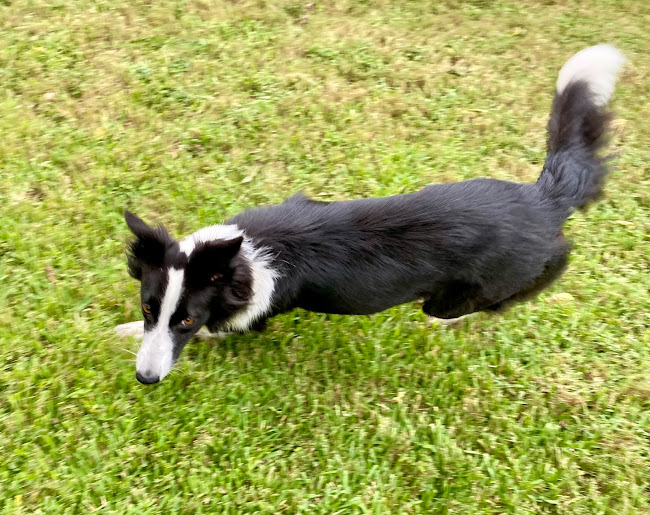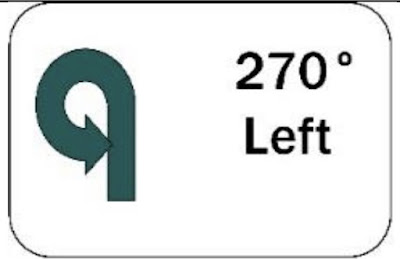I strongly support rescue. Of course I do. I've never had a dog that wasn't either given to me by someone or adopted from a breed rescue. Most dog lovers, including ethical breeders, support the idea of ending suffering and neglect for all dogs as well.
I admit to loving purebred dogs such as Border collies, Australian shepherds, and Cocker spaniels, and I realize there is an element of hypocrisy in desiring the traits of a wonderful purebred dog but never writing a check to an ethical breeder who works to humanely and carefully produce these purebred dogs. On the other hand, as long as my preferred type of dog continues to be neglected and abanded to end up in shelters, I plan to continue offering a home to these otherwise discarded dogs.
Yes, there is a selfish motive in there: that I end up having a dog with characteristics that appeal to me. If it weren't for some breeder, somewhere, my dog wouldn't exist. But also yes: I'm committed to the idea that I'm giving a do-over dog that someone else discarded a second chance. I want my cake and eat it too. I am grateful when I discover an ethical breeder doing a good job of painstakingly producing high-quality, talented, and healthy purebred puppies from high-quality, talented, healthy, and health-tested breeding stock.
Having my Border collie Jackie in my life is the result of rescue and I'm grateful to the body of rescue workers who personally sacrifice so much to help dogs like Jackie every day. A friend of mine responded well-meaningly to a recent post with the familiar phrase "Adopt, don't shop!" I have mixed feelings about this sentiment and want to explore the idea further.
Let's follow the phrase "Adopt, don't shop" through to its logical conclusion: if all that the supporters of rescue (of which I am one) wish to come true actually happens, that every dog on earth finds a loving forever home or other meaningful career, is prevented from reproducing and lives happily and healthily all the days of each dog's life, and all the cruel puppy mills and unethical backyard breeders are shut, we as dog lovers would suffer a severe shortage of dogs. And that's not necessarily a bad conclusion as long as there were other humane, sustainable, and cruelty-free sources of procuring a dog.
I support the ethical breeding of dogs as well as rescue. Ethical breeders who are educated and passionate about their dogs, who breed only a limited number of litters in a lifetime, and those only after having tested for temperament, health, hips, eyes, joints including patellas, genetic proclivity to passing on desirable (and culling the undesirable) heritable traits, heart disease, etceteras; and who have a vested interest in proving their dogs can have viable careers by showing, trialing, titling, and otherwise training their breeding stock with some form of meaningful markers of achievement.
But now let's say that ethical breeders become our sole source of procuring a dog, for pet, sport, support, service, or the myriad of other careers dogs are capable and wonderful at performing and adding to our lives. Ethical breeders who do all the minimum of pertinent health testing: raise their dogs in an appropriate environment, giving the correct and critical enrichment, care, veterinary needs, and early training that it takes to raise a litter of puppies, as well as maintaining breeding stock to these exacting standards, and breeders who carefully screen the homes into which their puppies are moving to be sure the dog will have a good life with all the essential resources for ongoing enrichment and veterinary care; necessarily these ethical breeders have to charge a minimum of several hundred dollars per dog as the adoption fee, and realistically upwards of several thousands of dollars per dog as the adoption fee.
Then where does that leave the average Jane who wants a dog, or maybe a couple, as a pet, for sport, for all the endless list of pure good that dogs bring into humans' lives? It starts to feel a bit like elite horse-keeping.
As an aside-- even the rankest of rescue horses such as PMU mares or offspring, the OTTB ex-racers, the broken-down cart horses who end up at auction barns (I have loved and ridden all of these examples over my lifetime), cost at least several hundred to a couple thousand dollars to acquire, never mind the never-ending upkeep costs that continue from day one. If someone just wants a basically sound backyard quality horse that is saddle-trained, expect to pay more than a couple grand on up to tens of thousands. Having a horse is relatively demanding from a resource perspective. Is this the direction we want to move with dogs? Perhaps.
Is this what the dog-loving community truly wants though? Is this in the best interest of our canine companions? Maybe it is. I don't know the answer. What I do know is that a subject with so much passion, effort, and resources, such as breeding, such as rescue, such as keeping dogs for pets, companions, sport, or any other career, or simply from pure genuine love of a dog, is not so simply boiled down to a single phrase of "Adopt, don't shop."
It occurs to me that in the meantime, unethical backyard breeders are selling puppies to less-prepared folks. Dogs that have shortened or otherwise uncomfortable lives due to health or behavioral issues because these backyard breeders, while possibly well-meaning, and who may even maintain the sire and dam in great conditions but fail to test for temperament or health issues, are producing dogs that have a fair likelihood of being abandoned by their purchasers after the offspring are no longer cute puppies and become a burden to these less-well-prepped dog owners at worst, or at best of not living quality, long, healthy lives. There are still scores of dogs that end up in shelters, like my own Jackie did, with no owner to come for them and in very rough shape mentally and physically. Hateful puppy mills with dogs in the worst imaginable of living horrors are unfortunately still doing business. All these dogs need and deserve a loving outcome.
So yeah, adopt don't shop. If and when we ever get to a dog shortage and find ourselves in a world where only an elite few can afford dogs, maybe all of us do-gooder rescue types will rue the day. Or maybe not, maybe we'll celebrate. But in the meantime, until such time as the shelters are empty and the rescuers can take a break from working in the trenches of abject neglect (and worse) that they pluck dogs from every day, I will continue to support both rescue and ethical breeding. For me and my house, I have had tremendous success adopting dogs from breed rescue, and find that rescue is the best balance for my personal odyssey.
My opinion is that I just don't picture myself purchasing a great dog from an ethical breeder that is producing quality dogs using principled methods when I can offer a home to the stray or abused shelter dog, even if it is likely that the health and/or temperament of these abandoned dogs may be sub-par to those of their ethically and knowledgeably produced brethren. Does this put me at a training disadvantage? At a competitive disadvantage? At an emotional disadvantage if disease or shortened lifespan reaches out an ugly hand to the dog I love and consider my family? Yes, probably it does. But if I forfeit this advantage to help a dog in need, then it is forfeit.
How often has a dog helped me when I am in need? The answer is always.
Pearls:
- Most dog lovers agree that suffering and neglect are worth struggling to end, and the best ways to end unwanted, unhealthy litters as well as to protect dogs from neglect is worth discussing
- "Adopt, don't shop!" Ok maybe, but we should consider all angles
- For my part, adoption has worked well; yet I admit I love purebred dogs, and it occurs to me they don't grow on trees; until suffering has ended and shelters are empty, I'll continue to adopt from reputable rescue organizations
- Further contemplation and discussion on this subject seems like a good idea
My current three adopted kids
The ashes or grave markers of my previous four kids, all were adopted and loved beyond measure
- Buffy, a purebred Cocker spaniel given to me by my parents. Buffy passed from geriatric renal failure at 13 years.
- Scarlett, a purebred Cocker spaniel, adopted from a breed rescue. Scarlett was a former puppy mill breeding dog but lived several happy, well-loved years with us. She succumbed to hemangiosarcoma cancer at the approximate age of 6.
- Roo, a purebred Australian shepherd, given to me by a friend in grad school. Roo succumbed to hemangiosarcoma cancer at age 8, exactly one year to the day from Scarlett.
- And finally, our dear Prissy, my first ever purebred Border collie given to me by my friend Patricia who rescued Prissy from neglect. Prissy lived a healthy 16 years and finally passed due to rapid-onset geriatric organ failure.




















